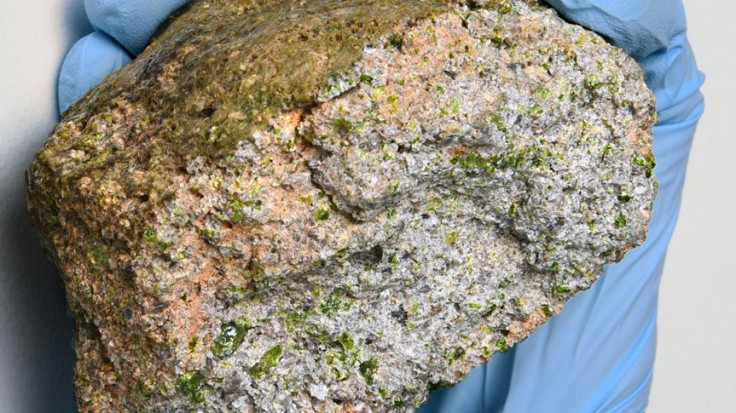Space Rock With ‘Impossible To Naturally Exist’ Mineral Found in Siberia

The universe is full of mysterious and rare minerals. And sometimes, meteorites bring these minerals to the Earth, locked as they are inside the space rocks.
Archaeologists, in 2016, came across a space rock, known as the Khatyrka meteorite, in the Koryak Mountains in eastern Siberia. And inside the rock they discovered an alien-mineral, described to be as hard as diamonds. The head of Institute of Astronomy of the Russian Academy of Science, Boris Shustov, said it's common to find new minerals in meteorites as they form under conditions different than those on Earth. “This is a fairly common phenomenon due the fact that a number of minerals and substances that can be formed and are formed under cosmic conditions, are not found on Earth,” he said.
The rock has been designated as a quasicrystal because of its unique structural properties. Experts say that quasicrystals look like ordinary crystals on the outside but are totally different from the inside. While atoms in a pure crystal are arranged in constantly repeating patterns, the atomic lattices inside the quasicrystal are arranged in patterns that are described to be ordered and diverse. It displays a range of shapes that has never been witnessed in a natural substance.
The minerals in this space rock are microscopic. Scientists, according to Geology, said the meteorite has been subjected to temperatures of over 1,000 degrees Celsius. “It forms cubic crystals or rounded grains. The size of the grains is usually less than 5 micrometers,” they said. The International Society for Meteoritics and Planetary Science in a statement had said the grains of the meteorite are dark gray with visible silicates and metal. The scientists believe this grain of mineral to be very, very old as its believed to have formed shortly after the birth of the solar system about 4.5 billion years ago.
The team at Geological and Planetary Sciences division’s Analytical Facility at Caltech discovered 35 new minerals in this particular space rock. The facility’s director, Chi Ma, said, that “normally we don’t observe" such aluminum-rich metal in space rocks because the aluminum would have reacted to form aluminum oxide.
He said the Khatyrka meteorite is the only meteorite ever found that contains metallic aluminum. Scientists continue to examine the space rock and hope to unlock more extraterrestrial minerals.
© Copyright IBTimes 2024. All rights reserved.





















